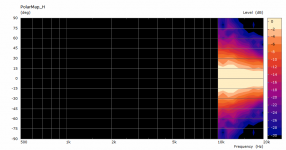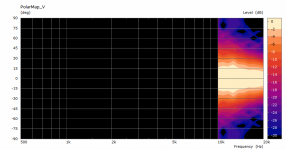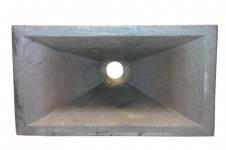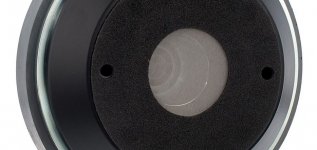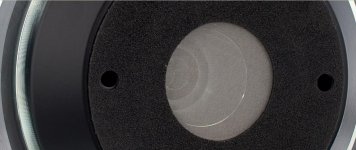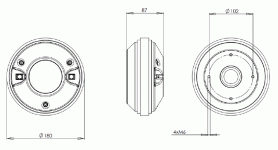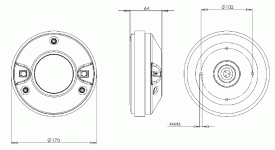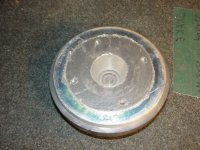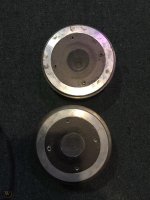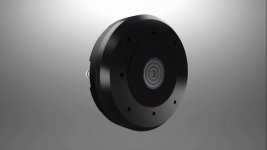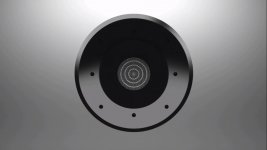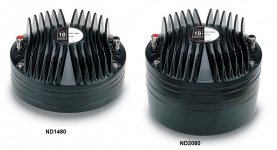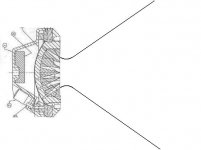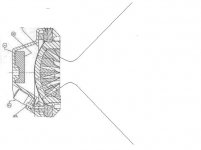I don't know, I still like the wider beam better. Would be interesting to hear both side by side though.
10k - 20k with the same mesh, for the previous horn, already quite a lot of noise off-axis. It is a 1.4" throat and starts to beam noticeably at about 12.5 kHz... (at least according to the simulation).
Attachments
Contrary to expectations, some 2" drivers aren't particularly beamy, as Jef111 has shown with the B&C DE75 + (modified) Megaton C8045.
The exit angle of the DE75 is 34.6°, which helps.
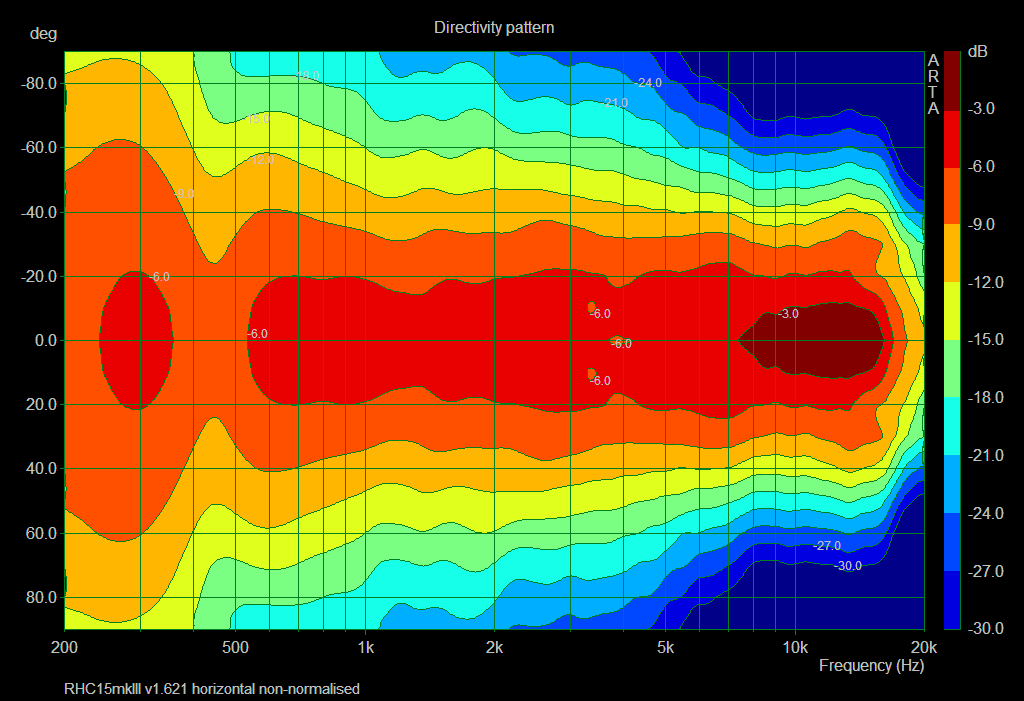
The exit angle of the DE75 is 34.6°, which helps.
Attachments
Last edited:
That's an interesting observation. How much different is it from DE750? Shouldn't it be considered more like 1.4" with a conical extension? I wonder how OS starting right at the phase plug exit would perform in comparison....The exit angle of the DE75 is 34.6°, which helps.
Attachments
Btw, is there shapes that cop better with the heigth of soundstages, please ? Often there are not so much problems with 3D stage and deepness and width items but more with heigth... from the limited horns I heard. But didn't kno if it was devices related, the rooms when happened.
Many of us are living with a ceiling vetween 2.4 & 2.7 meters (7.1' & 8.6')... with an average listening distance of ...more 3 meters (10')
Many of us are living with a ceiling vetween 2.4 & 2.7 meters (7.1' & 8.6')... with an average listening distance of ...more 3 meters (10')
Last edited:
As far as I know, perceiving height is very interesting phenomenon, maybe even more cognitive than anything else, but I know too little about it to explain. Would love to know more.
Very sorry, I can not help, I have no clue. Just noticed that with different speakers but with same rest of hifi devices and same rooms... not only with horns, btw. Conventional speakers are not equal by design there as well... just the horns seems more difficult to work with - at least for non experienced people I surmise.
That's an interesting observation. How much different is it from DE750? Shouldn't it be considered more like 1.4" with a conical extension? I wonder how OS starting right at the phase plug exit would perform in comparison.
The DE750 isn't just a 75(P) with conical exit, its motor structure is slightly different as well.
The 85, 82, 700 are similar to the 75, in that these are all pancake drivers.
The original DE75 doesn't have a shorting ring, but this apparently doesn't affect performance.
According to Pet111:
"the DE75 I used surprised me with how little it distorts. The third harmonic at the centers was well below -70dB and it was a measurement loaded with a bad noise distance (outdoors), and a distortion of the working microphone which is around -80dB, so in reality it can be even better. This is a pity to kill with the middle bass (15NW76), which has a distortion of 30dB higher."
Attachments
Last edited:
That's not what I meant. Looking at the exit of the DE750, there's a substantial conical portion whereas the exit of the phase plug structure itself terminates on a smaller diameter inside. But I guess this would be the case for a lot of drivers. For example 18sound ND4015* I would regard as a true 1.5" driver.The DE750 isn't just a 75(P) with conical exit,...
By changing the number of slices in the mesh to 20 and using the Mesh parameter line stopped the normals from being swapped in any of the slices.
It also improved the deviations reported by ABEC in the mesh which seems like a good idea.
I ran the sim with NUC on with the new mesh and it was better but there's still a few wobbles. Maybe a finer mesh, NUC and more frequencies would be a good thing but at the cost of computation time.
It also improved the deviations reported by ABEC in the mesh which seems like a good idea.
I ran the sim with NUC on with the new mesh and it was better but there's still a few wobbles. Maybe a finer mesh, NUC and more frequencies would be a good thing but at the cost of computation time.
I'm not sure this is a parameter that tells you anything usefull here. To me it makes a very good sense to have the mesh elements smaller near the throat and let them gradually grow as the mouth is approached. The deviation will rise, but for a good reason, IMHO.It also improved the deviations reported by ABEC in the mesh which seems like a good idea.
Maybe it wouldn't be optimal to have the sizes mixed in disorganized manner across the surface but this is not our case.
Last edited:
In my experience, what has quite a strong effect is the shape of the sub-domain interface (the cap on top of the mouth). In the recent version I switched back to a simple "box". Maybe I should switch to a more "spherical" cap again as it already proved to be better in some cases.
What is the reason or effect of using a different shaped interface instead of a flat surface?
It shoudn't matter in theory but evidently it has an effect - it defines the interior/exterior boundary after all. I noticed this quickly after I started experimenting with ABEC. Smoother and outward extended surfaces caused less problems we are talking about.
That's not what I meant. Looking at the exit of the DE750, there's a substantial conical portion whereas the exit of the phase plug structure itself terminates on a smaller diameter inside. But I guess this would be the case for a lot of drivers. For example 18sound ND4015* I would regard as a true 1.5" driver.
There's an additional 'step' in the exit of the DE750, yes.
The conical exit of the other drivers (64mm height) is shorter and the angle is quite wide, as visible in the pictures.
Attachments
Evidently, a phase plug that ends at the exit isn't a guarantee for excellent power response or directivity in the top octave.
The design of the phase plug as well as the interaction with (an eventual exit section and) the attached horn are decisive.
JBL has made a large variety of 1.5" exit drivers, some with conical 2" extension. JBL was also the first manufacturer to explicitly refer to differences between classic (WE 594A based) and modern pancake style drivers in their technical literature.
JBL adept 'pos' (also developer of rePhase) has measured many JBL drivers and published his findings primarily on audioheritage. This is an interesting remark:
"It is well known that the 2435 short phasing plug has a "problem" with the PT-F95HF that results in a dip at ~13khz (as well as very poor off axis behavior). This problem does not exists (or to a much lesser extend) on the H9800 and some other horns (the off axis behavior remains bad in the UHF tho, because of the 3 slits phase plug)"
The design of the phase plug as well as the interaction with (an eventual exit section and) the attached horn are decisive.
JBL has made a large variety of 1.5" exit drivers, some with conical 2" extension. JBL was also the first manufacturer to explicitly refer to differences between classic (WE 594A based) and modern pancake style drivers in their technical literature.
JBL adept 'pos' (also developer of rePhase) has measured many JBL drivers and published his findings primarily on audioheritage. This is an interesting remark:
"It is well known that the 2435 short phasing plug has a "problem" with the PT-F95HF that results in a dip at ~13khz (as well as very poor off axis behavior). This problem does not exists (or to a much lesser extend) on the H9800 and some other horns (the off axis behavior remains bad in the UHF tho, because of the 3 slits phase plug)"
Attachments
-
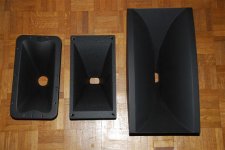 PT-F95HF, 2332, H9800.JPG41.7 KB · Views: 162
PT-F95HF, 2332, H9800.JPG41.7 KB · Views: 162 -
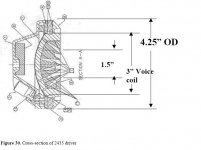 JBL2435drawing.jpg69.4 KB · Views: 166
JBL2435drawing.jpg69.4 KB · Views: 166 -
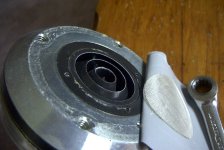 JBL 2435 phase plug_3.JPG123.8 KB · Views: 153
JBL 2435 phase plug_3.JPG123.8 KB · Views: 153 -
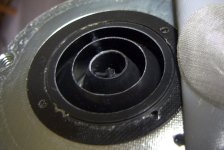 JBL 2435 phase plug_1.JPG133.2 KB · Views: 148
JBL 2435 phase plug_1.JPG133.2 KB · Views: 148 -
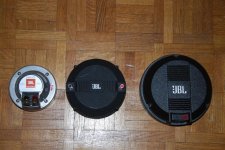 2435HPL, 2452H, 2450SL (1).JPG56.5 KB · Views: 142
2435HPL, 2452H, 2450SL (1).JPG56.5 KB · Views: 142 -
 driver-side.jpg32.3 KB · Views: 134
driver-side.jpg32.3 KB · Views: 134 -
 driver-front (1).jpg43.6 KB · Views: 138
driver-front (1).jpg43.6 KB · Views: 138 -
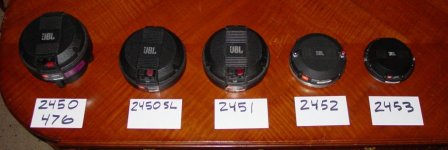 driver-back.jpg47 KB · Views: 166
driver-back.jpg47 KB · Views: 166
Last edited:
- Home
- Loudspeakers
- Multi-Way
- Acoustic Horn Design – The Easy Way (Ath4)
